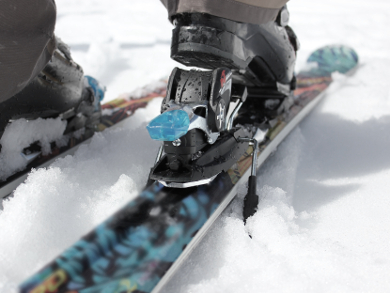Champion skiers win or lose by hundredths of a second, so anything that reduces friction is of potential interest. Sebastian Rohm, University of Innsbruck, Austria, and colleagues found that different snow temperatures require different grinding processes to minimize ski friction.
The researchers tested full-sized wooden cross-country skis with sintered ultrahigh molecular weight polyethylene on the bottom surfaces. They roughened the polymer base using a ski grinder, waxed the skis, and measured the effects of various groove widths and temperatures on the friction between ski and snow.
Ski surfaces with wide grooves and narrow plateaus reduced friction better on snow close to the melting point, when there is a lubricating film of water. Surfaces with narrow grooves and wide plateaus reduced friction better at colder temperatures, where solid-solid interactions predominate. The researchers speculate that the polymer and wax coatings on the wider plateaus might deform less as a result of solid-solid contact than the coatings on the smaller, sharper surfaces. At all temperatures, more meltwater is generated at higher velocities, which helps to offset the correspondingly higher friction.
According to the team, further research on the topic will focus on the systematic variation of surface textures for different snow conditions by improving ski preparation processes.
- Effect of Different Bearing Ratios on the Friction between Ultrahigh Molecular Weight Polyethylene Ski Bases and Snow,
Sebastian Rohm, Christoph Knoflach, Werner Nachbauer, Michael Hasler, Lukas Kaserer, Joost van Putten, Seraphin H. Unterberger, Roman Lackner,
ACS Appl. Mater. Interfaces 2016.
DOI: 10.1021/acsami.6b02651
Also of Interest
- Faking It: The Science of Artificial Snow,
Victoria Barton,
ChemViews Mag. 2016.
DOI: 10.1002/chemv.201600017
Considering the rising temperatures and the costs of snowmaking, does it have a future?




